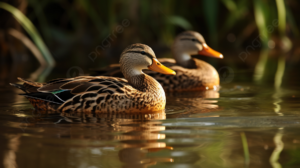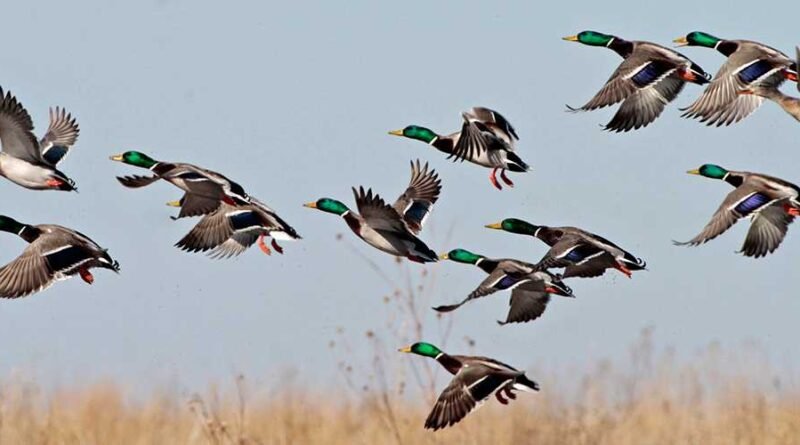Exploring the Fascinating World of Florida Ducks
Florida, renowned for its diverse ecosystem, boasts a rich population of ducks that play a vital role in its wetlands and waterways. In this article, we embark on a journey to discover the captivating world of Florida ducks, exploring their habitats, behaviors, conservation status, cultural significance, and tips for observing them in the wild.
I. Introduction to Florida Ducks
A. Overview of Florida’s diverse duck population
Florida is home to a diverse array of duck species, ranging from the iconic Mallard to the elusive Wood Duck. These birds inhabit various freshwater and saltwater habitats across the state, including marshes, lakes, rivers, and coastal estuaries.
B. Importance of ducks in Florida’s ecosystem
Ducks play a crucial role in Florida’s ecosystem by contributing to nutrient cycling, seed dispersal, and maintaining the balance of aquatic ecosystems. They also serve as indicators of wetland health and water quality.
C. Unique characteristics of ducks found in Florida
Each duck species in Florida possesses unique characteristics, from the vibrant plumage of the Northern Shoveler to the distinctive calls of the Blue-winged Teal. These adaptations enable them to thrive in their respective habitats.
II. Habitat and Behavior of Florida Ducks
A. Preferred habitats of Florida ducks
Florida ducks inhabit a variety of habitats, including freshwater marshes, cypress swamps, coastal wetlands, and urban ponds. They are often found near water sources rich in aquatic vegetation, which provide food and shelter.
B. Migratory patterns of ducks in Florida
Many duck species in Florida are migratory, traveling thousands of miles between their breeding and wintering grounds. Florida serves as a critical stopover and wintering destination for migratory ducks, offering abundant food resources and favorable climate conditions.
C. Social and mating behaviors of Florida ducks
Ducks exhibit complex social and mating behaviors, including courtship displays, pair bonding, and communal feeding. During the breeding season, males engage in elaborate displays to attract mates, while females select suitable nesting sites.
III. Threats and Conservation Efforts

A. Human-caused threats to Florida ducks
Florida ducks face various threats from human activities, including habitat loss and degradation, pollution, invasive species, and collisions with vehicles and infrastructure. These threats can have significant impacts on duck populations and their habitats.
B. Impact of climate change on duck populations
Climate change poses a growing threat to Florida ducks, affecting their habitats, migration patterns, and food availability. Rising temperatures, sea-level rise, and extreme weather events can disrupt breeding cycles and alter habitat suitability for ducks.
C. Conservation initiatives to protect Florida ducks
Numerous conservation organizations and agencies are working to protect Florida ducks and their habitats through habitat restoration, land acquisition, and public education initiatives. These efforts aim to safeguard wetland ecosystems and ensure the long-term survival of duck populations.
IV. Role of Ducks in Florida’s Culture
A. Historical significance of ducks in Florida
Ducks have long held cultural significance in Florida, with indigenous peoples and early settlers relying on them for food, feathers, and ceremonial purposes. Today, ducks continue to be celebrated in art, literature, and folklore.
B. Duck hunting traditions in Florida
Duck hunting has deep roots in Florida’s cultural heritage, with generations of hunters pursuing waterfowl in the state’s wetlands and marshes. While regulated hunting can contribute to conservation efforts and habitat management, sustainable practices are essential to ensure the future of duck populations.
C. Ducks as a symbol of conservation and environmental awareness
Ducks serve as ambassadors for wetland conservation and environmental stewardship in Florida. Their presence in parks, wildlife refuges, and protected areas highlights the importance of preserving natural habitats for future generations.
V. Tips for Duck Watching in Florida

A. Best places to observe ducks in Florida
Florida offers numerous opportunities for duck watching, with prime locations including national wildlife refuges, state parks, and birding hotspots such as the Everglades and Big Cypress Swamp.
B. Seasonal variations in duck populations
Duck populations in Florida fluctuate seasonally, with peak numbers occurring during the winter months when migratory ducks arrive from northern breeding grounds. Spring and fall migration periods also offer excellent opportunities for observing a variety of duck species.
C. Ethical guidelines for duck watchers in Florida
When observing ducks in the wild, it’s essential to practice ethical birdwatching etiquette, including maintaining a respectful distance, minimizing disturbances, and avoiding feeding or harassing wildlife. Respecting natural habitats helps ensure the well-being of ducks and other wildlife.
VI. Summary
Florida’s ducks captivate and inspire with their beauty, behavior, and ecological importance. Understanding the challenges they face and the efforts being made to conserve them is essential for their continued survival. By exploring the fascinating world of Florida ducks, we gain a deeper appreciation for the wonders of nature and the importance of protecting our natural heritage.
VII. FAQs
Q: What is the most common species of duck found in Florida? A: The most common species of duck found in Florida is the Mallard, followed by the Mottled Duck and Blue-winged Teal.
Q: Are there any endangered duck species in Florida? A: Yes, the Florida Mottled Duck is considered a species of special concern due to habitat loss and hybridization with introduced Mallards.
Q: How can I contribute to the conservation of Florida ducks? A: You can contribute to the conservation of Florida ducks by supporting habitat restoration projects, participating in citizen science initiatives, and advocating for policies that protect wetland habitats and water quality.

